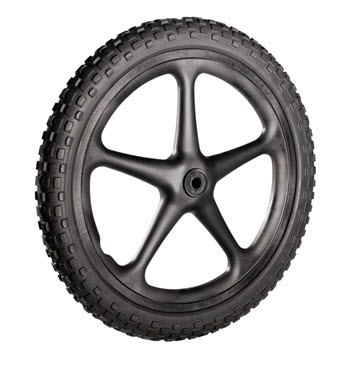How are Plastic Injection Molded Wheels Manufactured? Breaking down the production process of plastic injection molded wheels:
- Pellets of the material are fed into the hopper. If a composite is being used, pellets of the materials forming the composite are fed into the hopper. The hopper moves the pellets to a barrel where they are mixed. This process ensures that the materials are blended together to provide complete uniformity.
- Once blended, the mixture is moved to a heating module. Here, the composite is liquefied.
- This hot liquid will be injected into a mold. The liquid is then allowed to cool and harden.
- If more components need to be fused together, this process will be integrated at this stage. Here, the different parts will be joined with the help of heat, pressure, or any other medium.
- Once complete, the plastic injection molded wheel will be finished off. This includes cleaning, smoothing, finishing, etc.
The injection molding process is used across several industries for a diverse range of applications. From developing bottles and screws to wheels and automotive body parts, injection molding serves as the epicenter of industrial production today. It affords manufacturers with flexibility, cost and time reduction, computer integration, and much more. On the client’s end, they benefit from a wide choice of materials, fast turnaround times, long-lasting and efficient functionality, etc. This process has been widely adopted by almost all industries for these reasons. Understanding the production process is crucial to utilizing it to your advantage.

